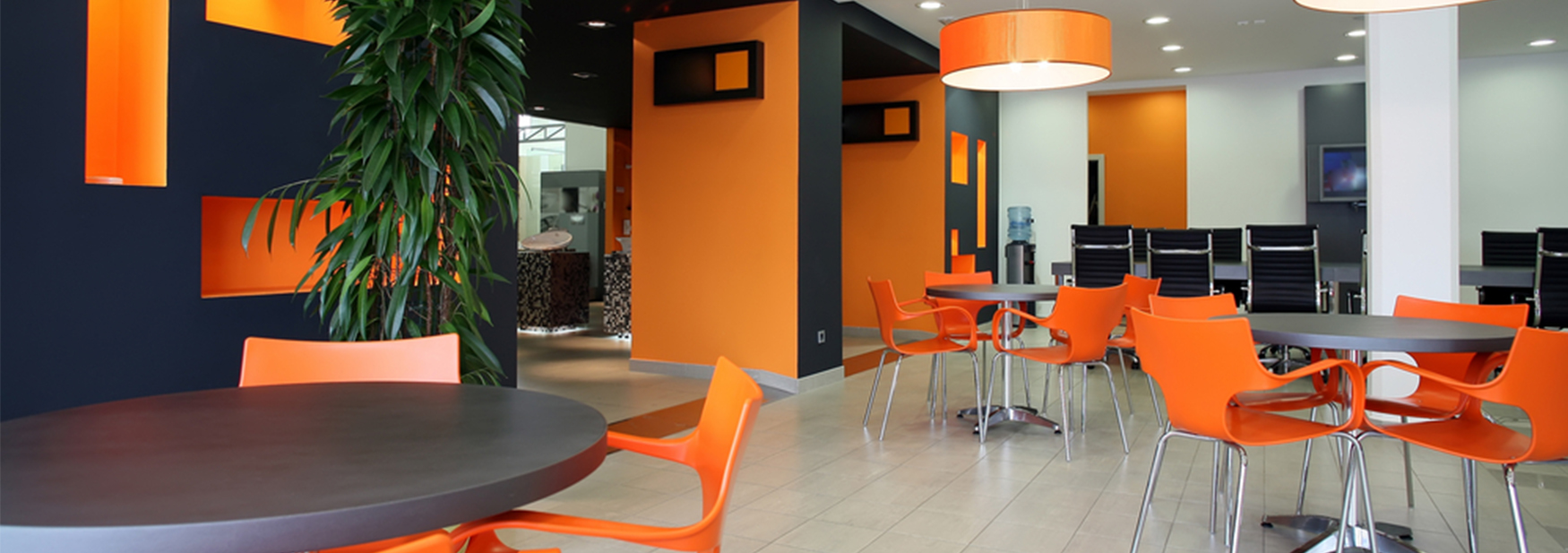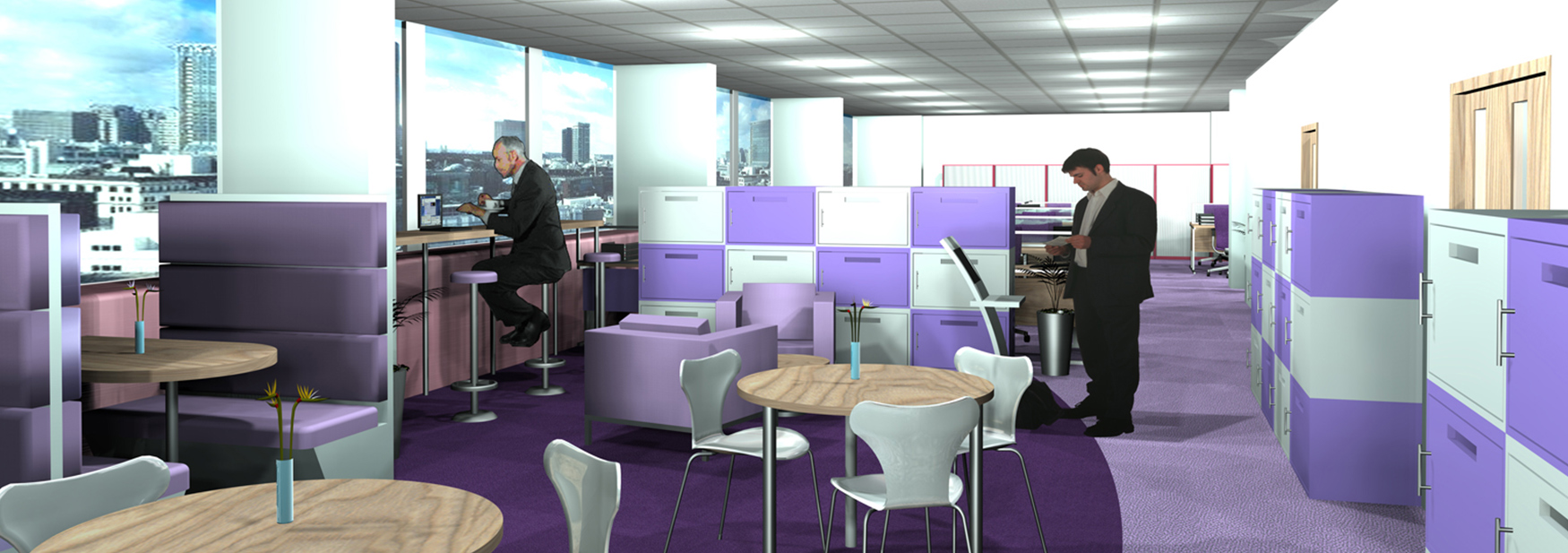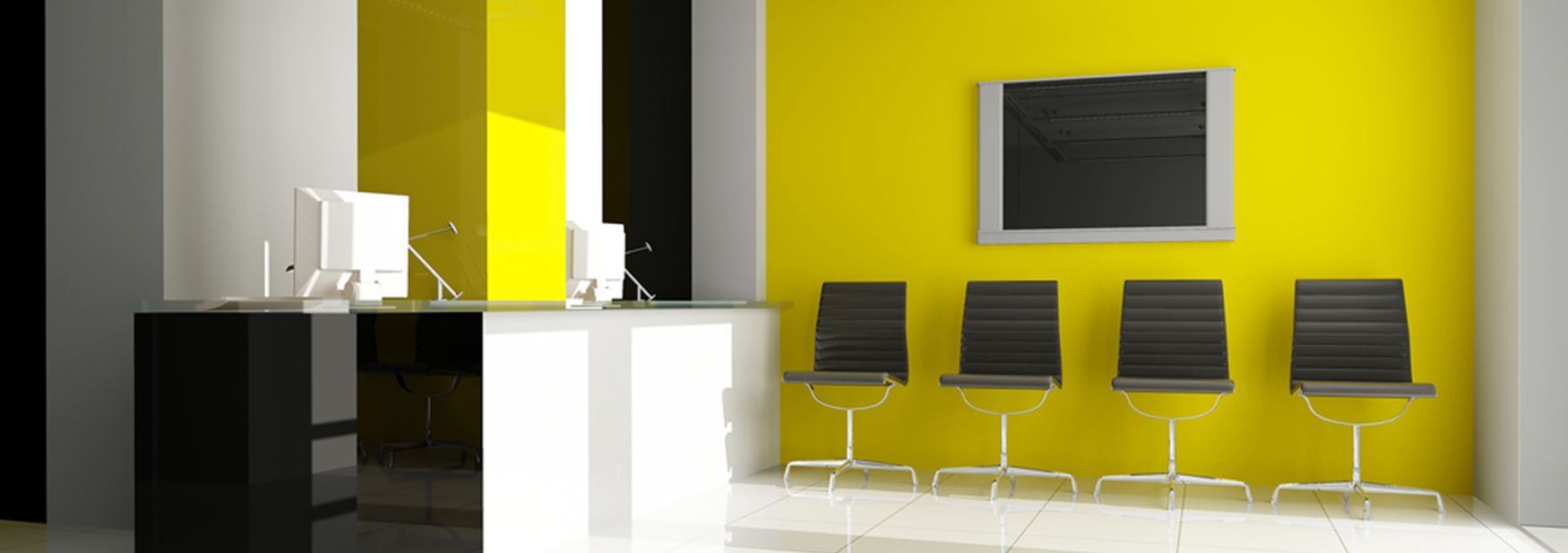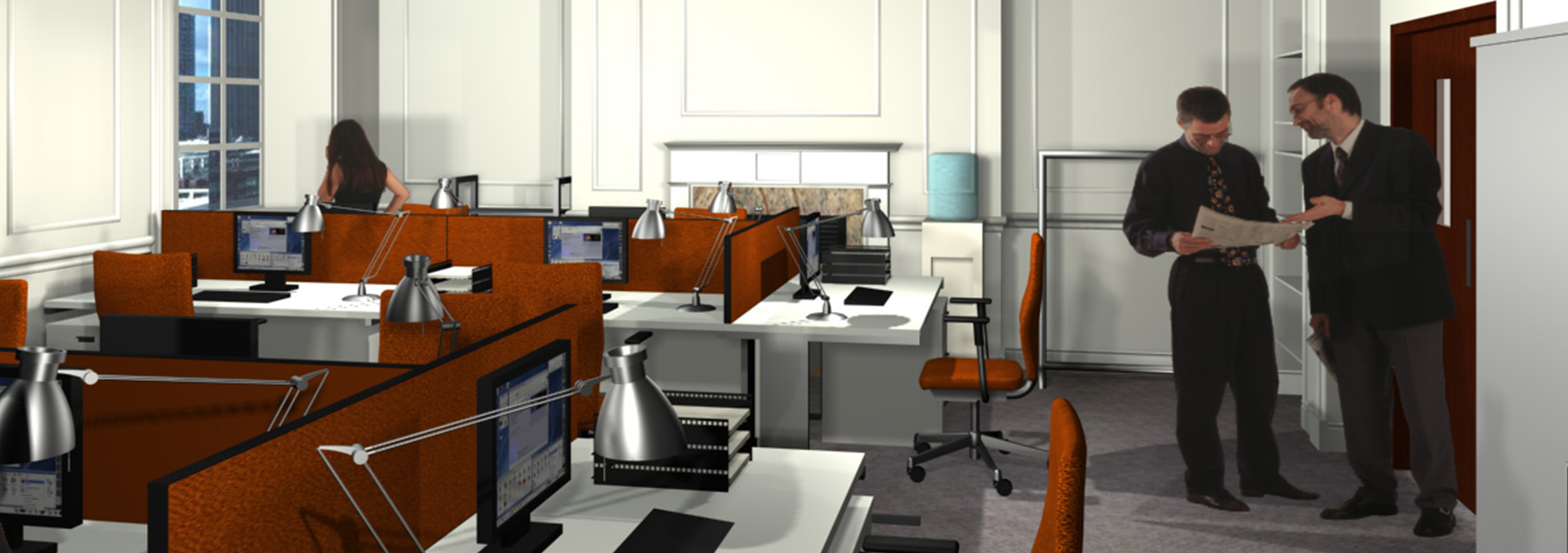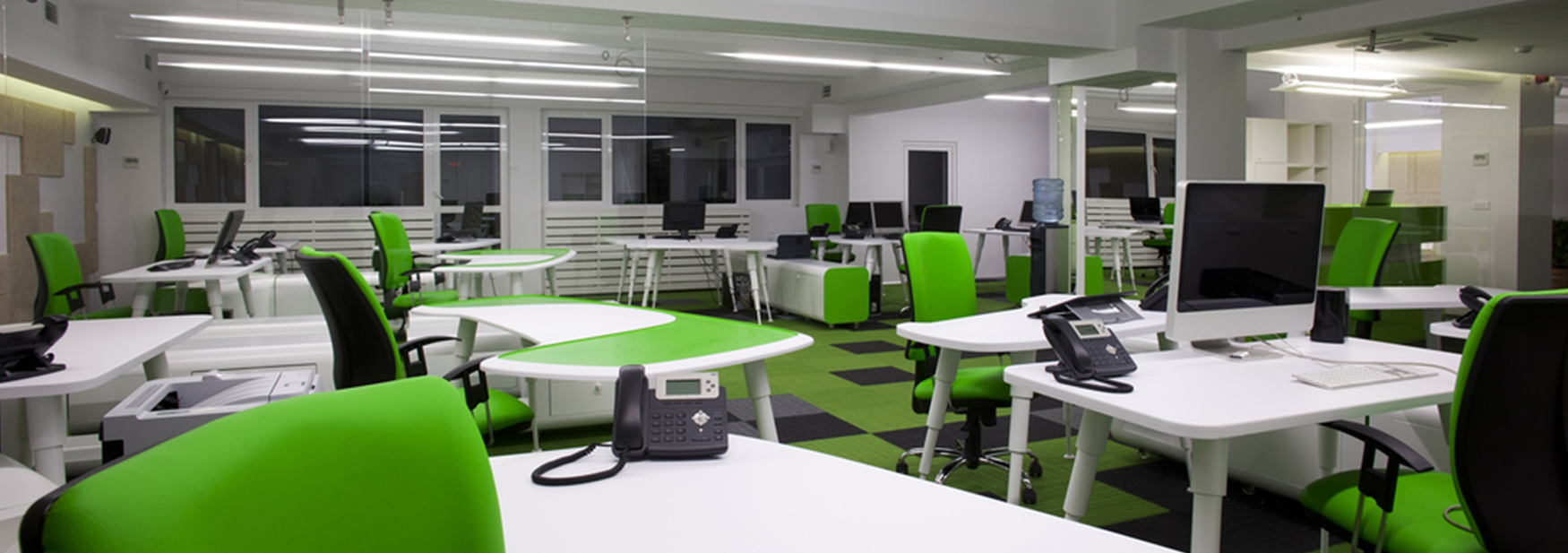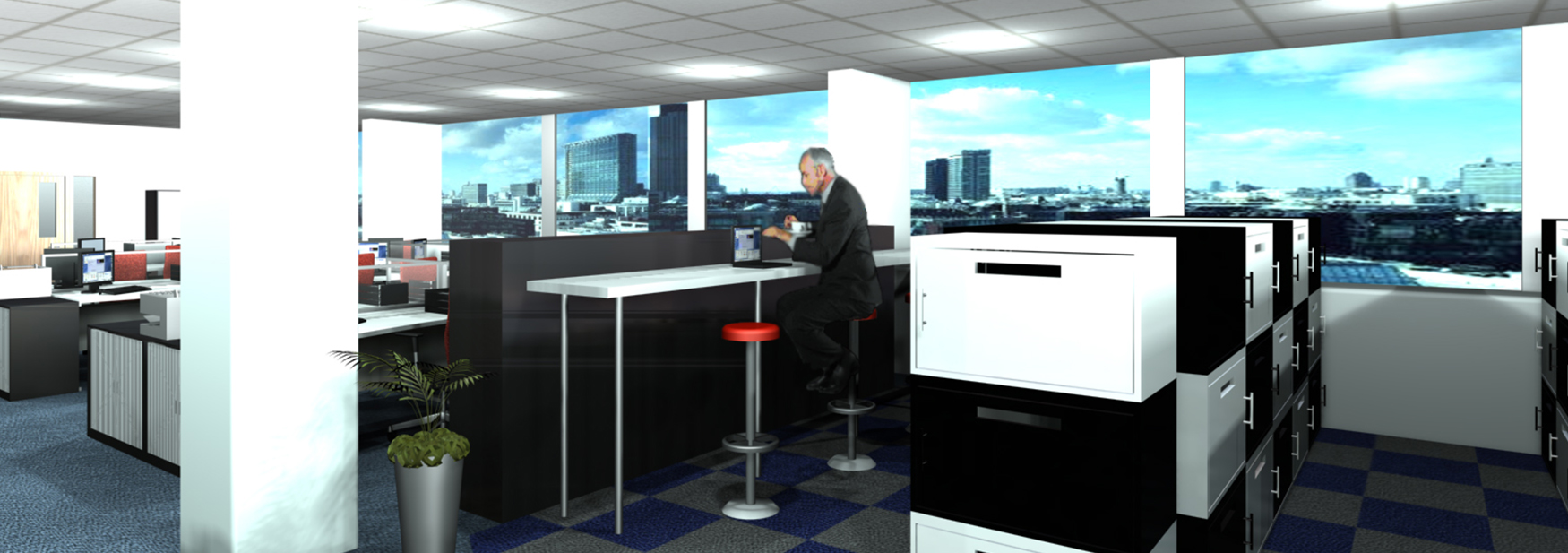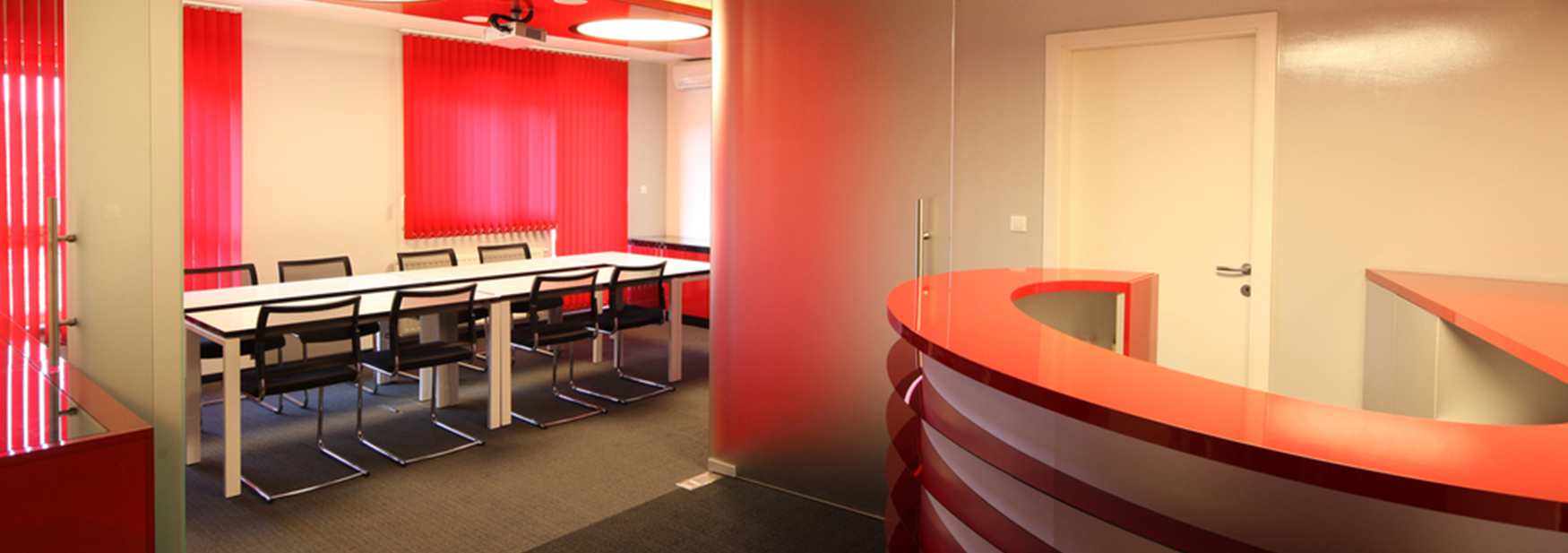In this blog I want to talk about the effect that technology has had on modern office design.
Most of Britain’s offices were designed and built before the rise to prominence of the personal computer. This meant that for each employee, all that was really needed was a desk, a chair, and somewhere to store their paperwork. This would have been an office without crashes, viruses and spam (well not the computer kind anyway), but equally without the internet, MSN messenger and Solitaire (what would they do all day?). However by the early nineties most desks had their own computer or terminal, and now it is unusual to find a desk without a PC.
The computerization of the office has meant a massive shift in the way that office space needs to be designed especially for older buildings without a raised floor (for electrical floor boxes). I have been to many offices that have hazardous trailing cables running from the wall to the desks in order to supply their desks with the necessary power and data; and yet there are simple ways of planning your office without risking tripping up your staff and the costly legal bills that follow – “no win, no fee; give us a go, what have you got to lose (except for your job)?”. The simplest way of getting the necessary power and data to the desk is by having your desks grouped in spurs running perpendicular to the wall. This way you can hide all the necessary cables at the back of the desks and in fact many modern desks now come with “cable management”. This should mean that you are less likely to be sued by staff that have been watching those adverts on daytime TV, whilst pretending to be sick, (although it doesn’t protect you from the dangers of slightly hot coffee).
Offices that do have floor boxes tend to come in two types; the type that were installed in the 70s and early 80s that are usually set in to channels cast in the concrete floor and the modern type that is a truly “raised floor”. The channel floor boxes can usually only be moved in one direction (along the channel) and so are not particularly flexible, whereas the raised floor type is a platform about 20cm above the concrete floor that in theory allow for the floor boxes to be moved pretty much anywhere (although many IT departments would like to claim otherwise). The raised floor solution gives you the flexibility to have desks in islands, spurs, as singles, or anywhere you want really.
In addition to the effects that computerization has had on the building, there have also been major changes necessary to the furniture within it. As staff started to need more and more desk space for increasingly large PCs and monitors, the standard office desk changed from a rectangular desk to the L-shaped corner desk. This was necessary to accommodate the large CRT monitors, and so gradually most offices replaced their furniture. Of course as soon as this had become the norm, the TFT flat screen monitor meant that all that extra corner space was no longer necessary, and this brought in the slightly curved Wave desk. However with the miniaturisation of the PC, many companies are now going back to the rectangular desk, and the increasing use of wireless technology means that things are likely to change further as it is now possible for many staff to share resources (such as printers). Many companies no longer use fax machines (we actually use a software fax which automatically emails us the fax rather than wasting paper), and this means no need for bulky faxes, no need to store paper and toner, and less of a requirement to print things out in the first place!
Looking ahead wireless technology will become the norm within the office, and as battery technology is improving soon we may be able to go have a situation where staff use laptop PCs that charge up on a docking rack overnight; allowing them to be truly wire free at their desks. Office design is becoming less constricted by technology and improvements in “natural light” lighting, climate control heating, and wire free computing are actually allowing technology to improve our office environments, rather than holding them back. We’ve re-designed many offices to include things like internet cafes, quiet zones, brainstorm rooms and funky soft seating, and companies are starting to see the benefits of having more than one working environment, and the ability to work anywhere.
If your office is stuck in a time warp, give us a call and we can offer practical advice as to how to improve it. Next time, I’ll be talking about the dreaded “hot-desking” and why it is not your enemy!
Jonathan Hall
Contact Us on 0845 166 8381
 space planning uk
space planning uk 